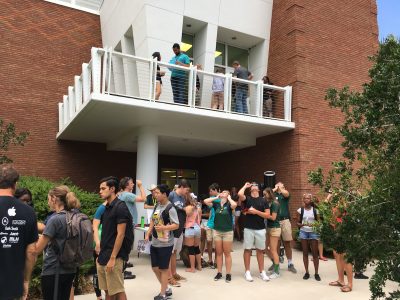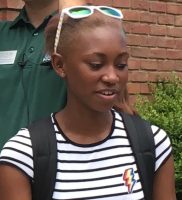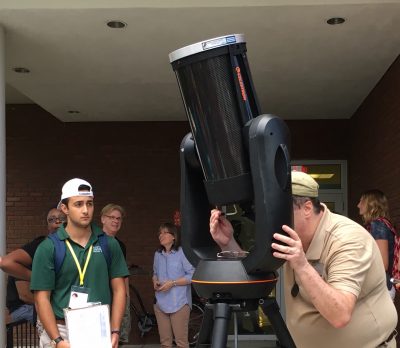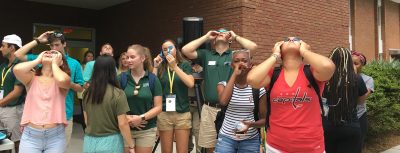
Stetson Physics Professor Kevin Riggs has a timely activity planned Monday afternoon for students in his First-Year Seminar class.
Incoming students will meet in the FSEM classes for the first time today, Aug. 21, at 2:30 p.m. – just as a partial solar eclipse unfolds over DeLand.
The moon will begin to move between the Earth and Sun, blocking out some of the sun’s rays, about 1:18 p.m. on Aug. 21 and reach its maximum at 2:50 p.m.
The National Weather Service reported a thunderstorm in the area at 1:15 p.m. and partly sunny skies through the rest of this afternoon.
“The eclipse will be a bit under 90 percent in DeLand,” explained Riggs, Ph.D., chair of the Stetson University Physics Department. “You would need to travel up to South Carolina to see the total eclipse.”
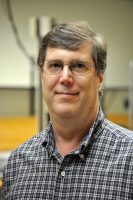
Kevin Riggs, Ph.D., is chair of the Stetson Physics Department
Looking directly at the sun is dangerous and can cause permanent eye damage. Added Riggs, “I don’t have (eclipse-viewing) glasses and you need to be careful about bad quality ones that are not sufficiently optically dense or are scratched.”
Instead, Riggs has made a pinhole viewer for his FSEM class on Energy and the Environment to watch the rare eclipse. A pinhole viewer projects the image onto another flat surface for safe viewing.
For those who can’t get outside, NASA will provide live video streams of the total solar eclipse across America.
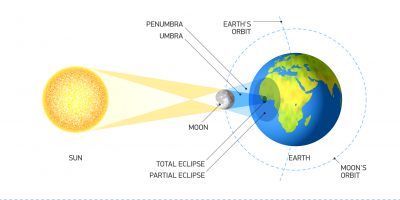
On Monday, Aug. 21, the moon will pass between the Earth and the Sun, casting a shadow.
To see the total eclipse, people will need to be in the path of “totality,” a 70-mile ribbon from Oregon, beginning about 9 a.m. Pacific Time, and moving over 13 states, ending near Charleston, South Carolina, at 2:48 p.m., according to NASA.
On the Stetson campus, Riggs said people will need a view of the southern and western parts of the sky to “see” the sun during the eclipse.
Stetson Professor Emily Mieras also will engage the 16 students in her FSEM class in the eclipse. She plans to make pinhole viewers from cereal boxes for students in her American Popular Culture class to watch the eclipse and discuss the media coverage of it.
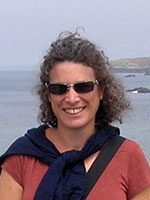
Emily Mieras, Ph.D. is chair of the Stetson History Department
“It’s gone beyond a celestial event to being a cultural phenomenon,” said Mieras, Ph.D., associate professor of History and American Studies, and chair of the History Department. “I think people have this fascination with astronomical phenomena. There’s a long history of people being fascinated about it, long before people understood how it all worked.”
Adapted from Stetson Today, August 7, 2017



